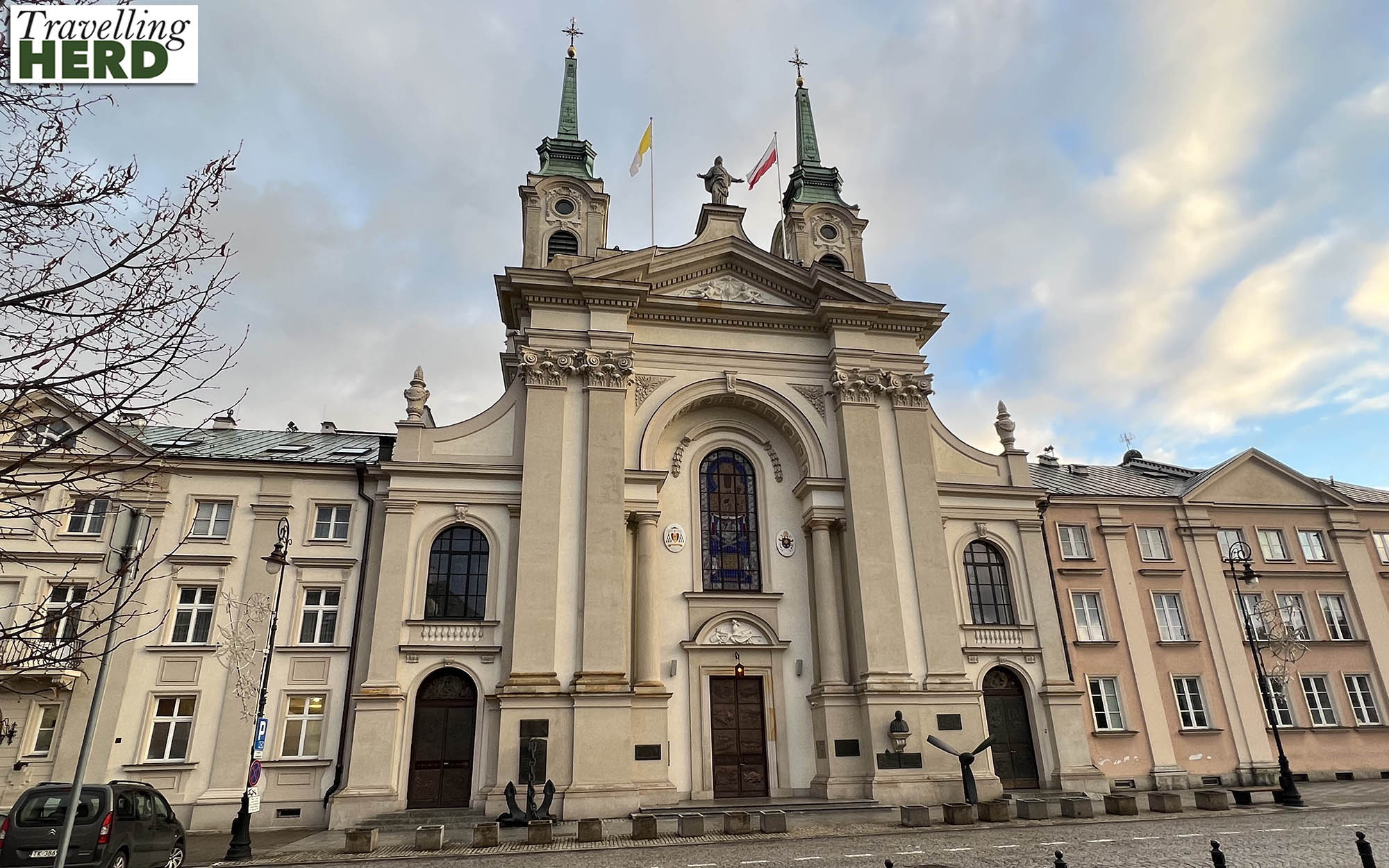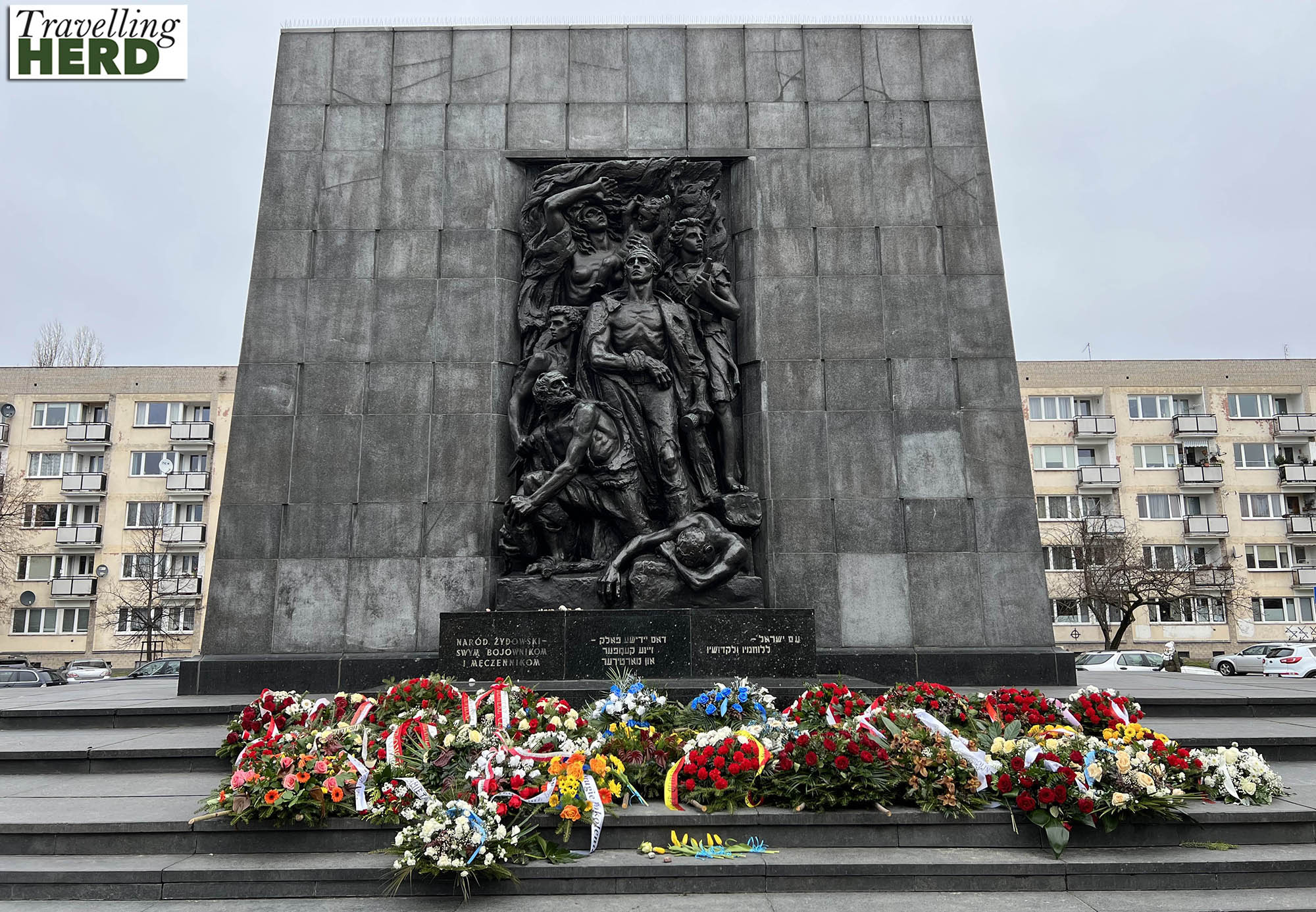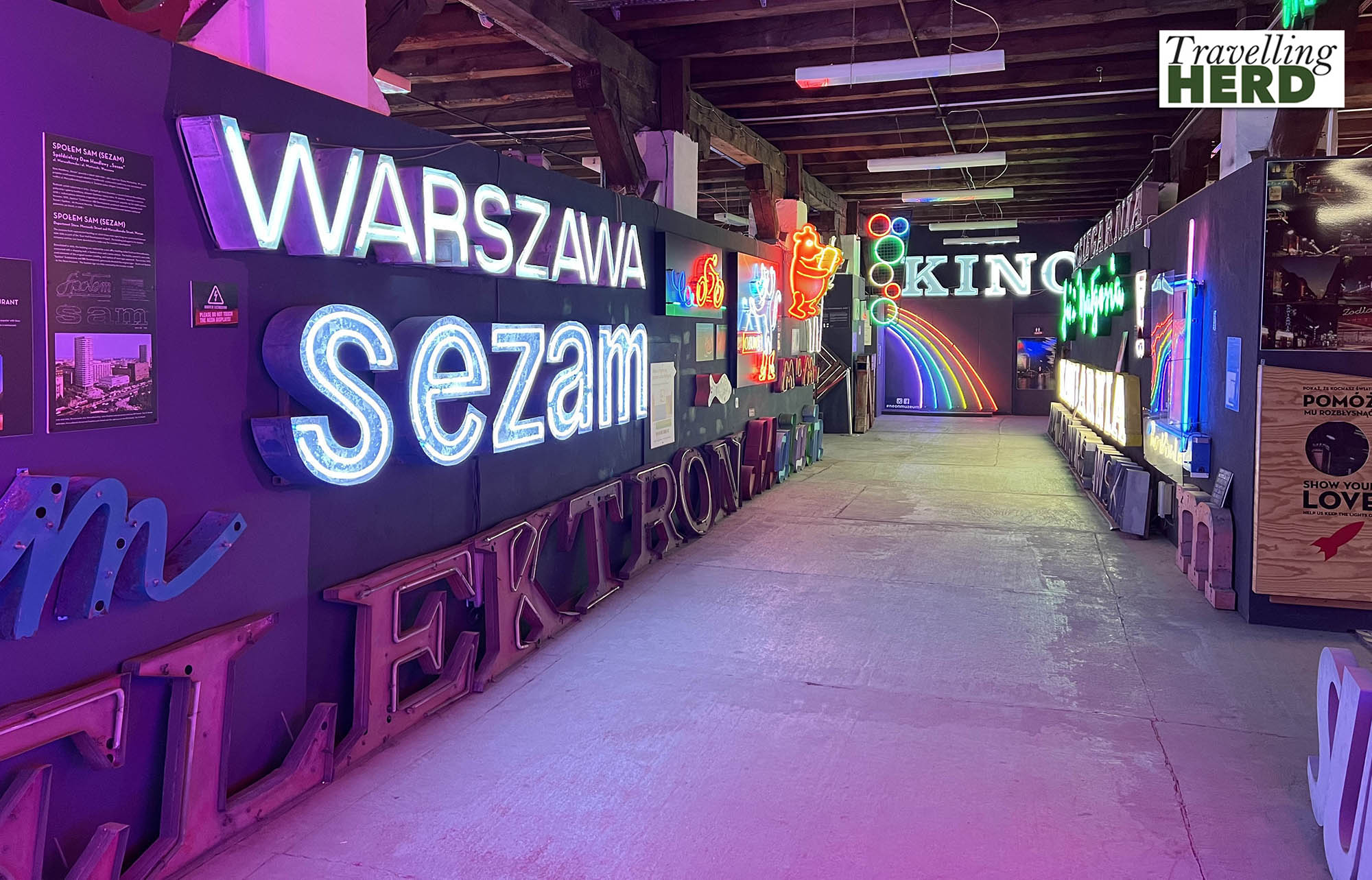Thursday 2nd and Friday 3rd February 2023
The station building at Gdańsk Głowny [below] is quite splendid. Unfortunately, it is also being renovated so our plan to find a convenient place for coffee and breakfast while we waited for our train to Warsaw was thwarted. Instead, we had quite a long wait on the platform in the cold. Matilda wished she had put on her thermal underwear.

Fortunately, as we were travelling first class we were offered complimentary hot beverages and a choice of meal which would be prepared to order with fresh ingredients. We both opted for salad with ham, pear and blue cheese which was definitely fresh and very tasty.

After disembarking in Warsaw, as we left the train station we saw the imposing Pałac Kultury [Palace of Culture and Science] which was a gift to the people of Warsaw from the nations of the USSR and was built between 1952 and 1955. Matilda was convinced that she had gone up to the observation deck before and it was not until a little research revealed that it is remarkably similar to the Latvian Academy of Sciences in Riga that she realised her error, and that she had been up the building in Riga. The incarnation of the building in Riga was built between 1953 and 1956, and was also a gift from other Soviet republics, where it is nicknamed ‘Stalin’s Birthday Cake’.

Having checked in to our hotel, we set off to explore some sights. We should mention that we first visited Warsaw together in 2016, before the inception of TravellingHerd.uk. As someone of advancing years, Matilda realises how useful our own blog is as a record and aide memoir of our travels. When we last visited Warsaw, we took in some of the major sights including the Royal Castle and the Warsaw Uprising Museum so did not visit them again.
This time our orientation walk took us past the Monument to the 1944 Warsaw Uprising. The Uprising was a major operation by the Polish Underground Resistance to regain control of Warsaw and liberate the city from German occupation. The uprising in the summer of 1944 was timed to coincide with the retreat of the German forces from Poland ahead of the Soviet advance. The Poles were betrayed by the Soviets who ignored their attempts to make radio contact and the Red Army, by failing to support them allowed the Germans to regroup and destroy much of the city. The Polish are understandably proud of the heroes of the Uprising.
In the initial defeat of Warsaw the German’s destroyed 25% of the city. During the Uprising they wiped out a further 25% and then after the Uprising they systematically destroyed, street by street, a further 40%, leaving just 10% of the city still standing.
The Monument to the 1944 Warsaw Uprising was erected in 1989 and comprises two distinct sculptures representing the Polish soldiers who took part in the fighting: one group is shown defending the barricades whilst the second [in the foreground below] is seen descending to the sewers which were used to move around the city unseen.

Facing the Monument is the Katedra Polowa Wojska Polskiego [the Field Cathedral of the Polish Army] also apparently known as the Church of Our Lady Queen of the Polish Crown. This is where major religious military services and memorials are held. It was targeted by the Luftwaffe during the Uprising and the crypts were used as a temporary field hospital. An anchor and a propellor stand outside in recognition of its affiliation with Polish armed forces.

From here our walk took us past the Barbakan Warszawski [Warsaw Barbican] which was erected in 1540 and is a semicircular structure and one of the few remaining parts of the historic fortifications that once encircled the city. Located between the Old and the New Towns it was 14 meters wide and 15 meters high measured from the bottom of the moat which surrounded Warsaw. Almost immediately it became obsolete largely as a result of the rapid developments in artillery power. Perhaps it is so well preserved as it never truly featured in the defence of the city.

A Christmas Market and ice rink were still almost in progress in Rynek Starego Miasta [the Old Town Market Place]. Although the lights were on and some of the stall were still selling mulled wine and beer, the festivities seemed to be largely over. We could imagine however, that in the run up to Christmas, this would have been a good place to start to get into the festive spirit.

From here we walked to the Castle Square and then along some of the ramparts to Mały Powstaniec – a statue erected in 1983 to commemorate the child soldiers who fought and died during the Uprising.

in the Warsaw Uprising of 1944
We had thought that by the beginning of February the Christmas lights might be turned off but we found that they are still shining brightly in Warsaw and we even passed someone in a Santa outfit.

Robert wanted to return to Same Crafty, a multi-tap independent craft beer bar, which like one of Robert’s favourite hostelries in London – The Ship and Shovell – is split across two sides of the street.

We also dropped in to The Alchemist, a popular bar where you can buy a card and load it with credit then serve your own beer or Prosecco on tap. We had done this on our last visit and Robert still has the card at home but failed to bring it with him this time so we settled for being served by a member of staff.

Our first stop on Friday was to be the POLIN Museum. The name POLIN means both Poland, or ‘rest here’ in Hebrew and according to legend when the first Jews arrived, the birdsong sounded like the word ‘polin’ to them and so they stayed and settled here.
The museum tells the history of the Polish Jews over the last 1,000 years, from the time of the earliest settlements through to the Holocaust and the present day. It stands on land which was once part of the Warsaw Ghetto and opened on 19 April 2013.

The Jewish community in Poland was once the largest Jewish community in the world and the exhibition is very informative. In the fifteenth century Jews were deemed to be ‘people of the king’ and as such were outside a town’s jurisdiction. This meant that they were unable to vote or join guilds but neither did they pay municipal taxes. Jews wishing to enter Poland had to seek the ruler’s permission and could not leave without settling their affairs with the royal treasury.
Perhaps the most beautiful exhibit is a replica of the intricately painted ceiling and birman of a 17th-century Gwoździec synagogue.

POLIN faces the Monument to the Ghetto Heroes [Pomnik Bohaterów Getta] which stands at the spot where the first armed clash of the uprising took place in 1944.

From here we went to the Muzeum Neonów or Neon Museum which was established to document and protect Polish and Eastern Bloc light advertisements created after WWII.
Here we learned about a new concept: ‘neonisation’ which Matilda did not think was a real English word and was pleased to hear one of the video displays confirm her suspicions.

After WWII from the 1950s onwards, the communist regime commissioned neon signs from of some of Poland’s leading graphic designers and typographers. Intended to create a sense of wealth and glamour they were literally a ‘sign of the times’.
The Muzeum Neonów includes neon from long-gone establishments in various stages of preservation.

Unfortunately when the regime was swept away, so were many of these signs which reminded people of their oppressors. It is a small museum and located away from the centre. but well worth a visit.
The Christmas decorations and lights in one street were Fererro Rocher themed.

It started to snow as we conveniently found ourselves outside Beer Heaven.

Beer Heaven offers a total of 78 beers on tap reserving just one tap for prosecco. Robert felt that this was an appropriate ratio.

However, the choice was simply too vast and he contented himself with ordering two beers.

From here we strolled to Jabeerwocky to see another impressive range of ale on offer.

Selfie of the day:

Dish of the day:

Route Map:






